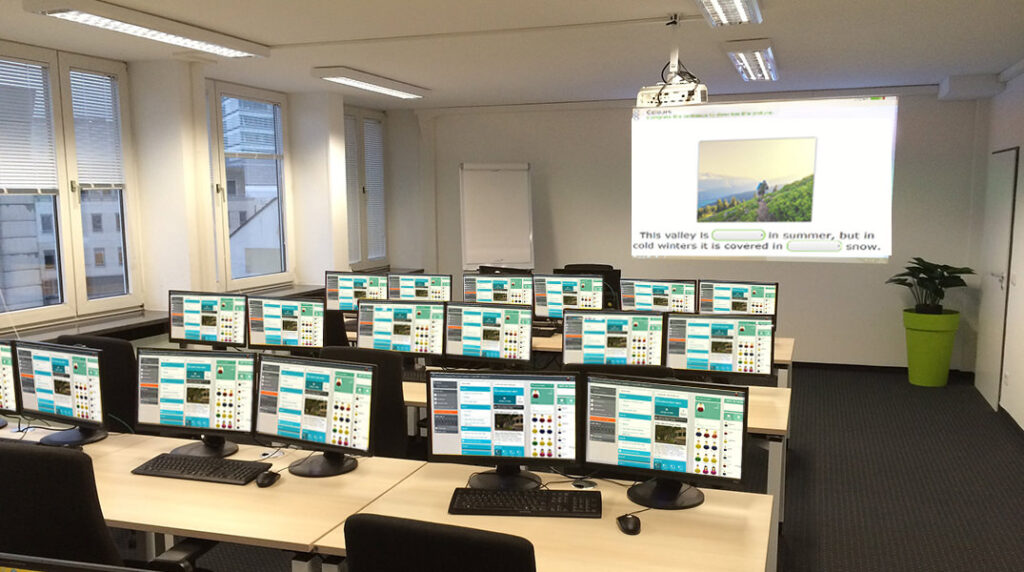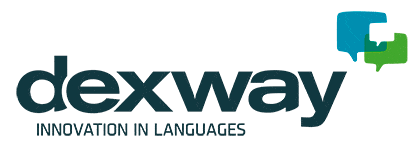Choosing language laboratories or classroom training networks is the best decision made by language educational institutions to offer their students the ability to learn English, Spanish, French, German, or even several languages at once. The language lab is a very useful tool that facilitates classroom engagement and interaction via computer-based exercises and activities to maximize language immersion. These labs provide a very different experience from the traditional system of teaching and learning languages, offering more advanced features and functionalities.

Using a language lab has many benefits
Language labs are becoming highly valued at schools and universities because they offer students a structured eLearning environment that is successful and reliable. New technologies are increasingly more present in classrooms as they facilitate the teacher’s role in creating a more attractive learning environment for the student and can offer their students more practice hours and up-to-date exercises than can be found in language books.
# 1 A language lab is practical
Learning a new language just by studying the theory is not enough to guarantee a successful language learning experience. Language labs provide practice in an entertaining and interactive way to acquire the 4 main language skills: listening, speaking, reading, and writing. Students learn more comprehensively through a language lab, using more class time instead to achieve these three main objectives:
- Self-learning: The student progresses in a self-guided but structured and progressive training to achieve the goals and objective set by the school or educational body.
- Complimentary: Language labs allow students to reinforce material learned in class by putting them into practice through interactive activities.
- Monitoring and Evaluation: Teachers know the progress of each student and receive reports of strengths and weaknesses to better adapt the classroom activities.
# 2 Students learn much faster in the language lab
Practice leads to language learning success! Language labs’ interactive courses help students learn much faster than in a regular classroom setting. The methodology of the classroom language network uses a progressive model to promote natural learning, where students learn the different concepts of language in an intuitive way. The language lab boosts the motivation of students achieving higher levels of language retention and progress.
# 3 The teacher takes on a more important role in language laboratories
There is a big fear in the education world that technology will replace the role of the teacher and the position will become obsolete entirely. The language lab debunks this myth because it provides supplementary materials that only facilitate the role of the instructor rather than compete with it. The teacher can then focus on the important parts of the course rather than waste time explaining everything. The structure of the language lab courses also facilitate the work teacher puts in when preparing lessons and allows them to prepare them in less time and with a greater volume of interactive resources. The course then collects the student information and provides instantaneous reports of the lesson’s progress against objectives; the teacher uses this information to guide the direction of the class.
# 4 Use more resources and varied activities than in a traditional classroom
Language labs allow students to practice the language with a much wider variety of activities and exercises based on the computer. Learning occurs in a structured way, in a real context and visually attractive way that immerses the student in the language learning environment and promotes language use. The students can watch videos, practice their pronunciation through a speech recognizer, learn new vocabulary, and much more.
# 5 Language laboratories allow for diversity in the classroom
Language laboratories provide teacher attention to students, especially in the case of schools with different levels because as interactive courses, language labs are tailored to the individual needs of students. On the other hand, thanks to monitoring and evaluation in real time, the teacher knows exactly what course objectives pose major difficulties for the student time and can reinforce the class accordingly.
# 6 Labs foster communication in the classroom
Language labs also encourage communication student-teacher as well as student-student with activities and exercises essential to oral communication and the understanding of the language. The labs include tools for creating groups, host conversations via chat, promote messages on the board, access to a community of students who are also studying the same language, etc.
# 7 Language labs are an intuitive tool for both the student and teacher
This method of learning does not require professional technical skills for use in the classroom, the teacher only needs basic computer skills and students will welcome the added technology they are already so adept with.
# 8 Language laboratories optimize computing resources
Both universities and colleges have classrooms with computers there for students to complete school works or study other subjects. There are also a number of faculty computer labs or office computers for administration also available. Language labs essentially recycle resources an educational institute already has and adapts it to the language course.
In short, language labs are a very comprehensive and cost-effective tool for educational institutions to monetize their language training and also offer students effective language learning via the latest technology and educational content. They are the perfect solution for designing a structured academic curriculum in accordance with the objectives of an educational center with an international vocation audience that seeks the highest quality in teaching.

